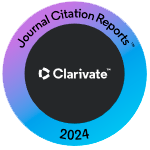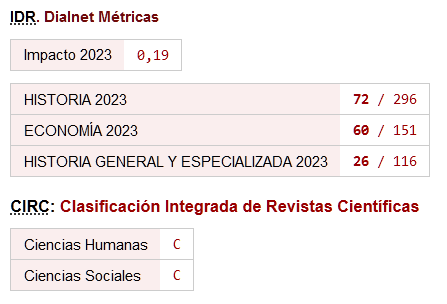Accounting and the stigma of poverty
the case of the “shameful poor” and Pio Monte Della Misericordia of Naples in the 17th and 18th century
DOI :
https://doi.org/10.26784/issn.1886-1881.v18i1.417Mots-clés :
Poverty, Accounting, Stigma, Naples, MercyRésumé
The Pio Monte della Misericordia (PMM) is a charity settled in Naples in the early 17th century, and it is still active in social care services and assistance to the disadvantaged. The institution was the result
of the action of a group of noblemen who were part of the most powerful Neapolitan families. The action of
the PMM was directed in favour of the poor, sick and dead as well as captives, following Matthew’s gospel
(25, 34–36). Alongside these works, the PMM also acted in another peculiar direction, assistance to the
“shameful poor”, that is, the decayed nobles—members of noble families who were no longer able to uphold
the “nobles’ way of life”. This kind of poverty was considered a weakness of the system because it called
into question the social stratification of feudal society of the 17th century. For this reason, the nobility reacted
by founding the PMM, which collected subscriptions from its associates, who were almost all of the most
powerful Neapolitan noble families, and year by year it also included the small urban and sub-urban nobility.
The paper deals with Georg Simmel’s insight on poverty, analysing the role of accounting in building the
relationship between rich and poor. Accounting could be considered as a tool adopted to separate the rich
from the poor, insulating the rich from the stigma of poverty. Meanwhile, accounting allows the rich to benefit
from their gift, guaranteeing the legitimation of wealth and the continuation of poverty within a context of social stability.
Téléchargements
Références
Álvarez-Dardet, C., López, J.D. and Baños, J. (2006), "Accounting at the boundaries of the sacred: the regulation of the Spanish brotherhoods in the eighteenth century", Accounting History, Vol. 11 No. 2, pp. 129-150. https://doi.org/10.1177/1032373206063110
Ape, G. (1705), Istruzioni per lo governo del Monte della Misericordia, cavate dalli primi statuti, dalle collezioni antiche, dalli volumi delle Conclusioni generali, dalli Testamenti ed altre pie disposizioni. Stamperia di Felice Mosca.
Avallone, P. (2007), Il credito su pegno nel Regno di Napoli (XVI-XIX secolo), in Avallone, P. (edit.), Prestare ai poveri. Il credito su pegno e i Monti di Pietà in area Mediterranea (secoli XV-XIX). Consiglio Nazionale delle Ricerche, pp. 69-100.
Avallone, P. and Salvemini, R. (1999), "Dall'assistenza al credito. L'esperienza dei Monti di Pietà e delle Case Sante nel Regno di Napoli tra XVI e XVIII secolo", Nuova Rivista Storica, Vol. 83 No. 1, pp. 21-54.
Bernfeld, T. (2012), "Financing charity", In: Poverty and Welfare Among the Portuguese Jews in Early Modern Amsterdam, Liverpool University Press, pp. 136-158. https://doi.org/10.3828/liverpool/9781904113577.003.0005
Boccadamo, G. (2010) Napoli e l'Islam. Storie di musulmani, schiavi e rinnegati in età moderna. M. D'Auria Editore.
Bono, S. (2016) Schiavi. Una storia mediterranea (XVI-XIX secolo). Il Mulino.
Booth, P. (1993), "Accounting in churches: a research framework and agenda", Accounting, Auditing & Accountability Journal, Vol. 6 No. 4, pp. 37-67. https://doi.org/10.1108/09513579310045684
Brancaccio, G. (2011), "Economia e rendita feudale negli Abruzzi e nel Molise (secoli XVIXVII)", In: Musi, A. and Noto, M.A. (Eds.), Feudalità laica e feudalità ecclesiastica nell'Italia meridionale, Quaderni di Mediterranea, pp. 85-102.
Burchell, S., Clubb, C., Hopwood, A., Hughes, J., and Nahapiet, J. (1980), "The roles of accounting in organizations and society", Accounting, Organizations and Society, Vol. 5 No. 1, pp. 5-27. https://doi.org/10.1016/0361-3682(80)90017-3
Casanova, D. (2008), Fluent ad eum omnes gentes: il Monte delle sette opere della Misericordia nella Napoli del Seicento. CLUEB.
Chambliss, W. (1964), "A sociological analysis of the law of vagrancy", Social Problems, Vol. 12 No. 1, pp. 67-77. https://doi.org/10.2307/798699
Clemente, A., & Zaugg, R. (2017), Hermes, the Leviathan and the Grand Narrative of New Institutional Economics: The Quest for Development in the Eighteenth-Century Kingdom of https://doi.org/10.17104/1611-8944-2017-1-108
Naples, Journal of Modern European History / Zeitschrift Für Moderne Europäische Geschichte / Revue D'histoire Européenne Contemporaine, Vol. 15 No. 1), pp. 109-129.
Cohen, M. (2005), "Feeding the Poor and Clothing the Naked: The Cairo Geniza", The Journal of Interdisciplinary History, vol. 35 No. 3, pp. 407-421.https://doi.org/10.1162/0022195052564225
Connolly, C., and Hyndman, N. (2013), "Charity accountability in the UK: through the eyes of the donor", Qualitative Research in Accounting & Management, Vol. 10, pp. 259-278. https://doi.org/10.1108/QRAM-02-2013-0006
Cordery, C. (2006), "Hallowed treasures: sacred, secular and the Wesleyan Methodists in New Zealand, 1819-1840", Accounting History, Vol. 11 No. 2, pp. 199-220. https://doi.org/10.1177/1032373206063114
Corrao, P. (1997) "Gli ufficiali nel Regno di Sicilia del Quattrocento", Annali della Scuola Normale Superiore di Pisa, Serie IV, Quaderni.
Dean, M. (1992), "A genealogy of government of poverty", Economy and Society, Vol. 21 No. 3, pp. 215-251. https://doi.org/10.1080/03085149200000012
De Rosa, L. (2003), "La gestione del Pio Monte della Misericordia dalle origini alla deflazione del 1622", In: Pisani Massamormile, M. (Ed.), Il Pio Monte della Misericordia nel quarto Centenario, Electa, pp. 231-243.
De Simone, E. (1974) Il Banco della Pietà di Napoli, 1734-1806. Droz.
De Simone, E., and Ferrandino, V. (Eds.). (2006) Assistenza, previdenza e mutualità nel Mezzogiorno moderno e contemporaneo. Franco Angeli.
Dovidio, J.F., Major, B., and Crocker, J. (2000), "Stigma: introduction and overview", In: Heatherton, T.F., Kleck, R.E., Hebl, M.R., and Hull, J.G. (Eds.), The Social Psychology of Stigma, Guilford Press, pp. 1-28.
Eden, F.M. (1928) The State of the Poor, Routledge.
Edwards, J.R., and Chandler, R. (2001), "Contextualizing the process of accounting regulation: a study of nineteenth century British friendly societies", Abacus, Vol. 37 No. 2, pp. 188-216. https://doi.org/10.1111/1467-6281.00083
Ezzamel, M. (2005), "Accounting for the activities of funerary temples: the intertwining of the sacred and the profane", Accounting and Business Research, Vol. 35 No. 1, pp. 29-51. https://doi.org/10.1080/00014788.2005.9729661
Falk, G. (2001) Stigma. How We Treat Outsiders, Prometheus Book.
Filangieri Ravaschieri Fieschi, T. (1876) Storia della carità napoletana, vol. II, Stab. Tipografico del Cav. Francesco Giannini.
Foucault, M. (1979), History of Sexuality: An Introduction, Lane.
Garzón, P., and Donoso, R. (2001), "El hospital de Santa María de Plasencia: características del método contable utilizado (1789-1839)", Comunicación presentada al XI Congreso de AECA, Madrid.
Gazzara, L. (2003), "Fonti inedite sulla fondazione del Pio Monte della Misericordia: una lettura interpretativa", In: Pisani Massamormile, M. (Ed.), Il Pio Monte della Misericordia nel quarto centenario., Electa, pp. 213-228.
Goffman, E. (1990) Stigma. Notes on the Management of Spoiled Identity. Penguin Books.
Graham, C., and Grisard, C. (2019), "Rich man, poor man, beggar man, thief: accounting and the stigma of poverty", Critical Perspectives on Accounting, Vol. 59, pp. 32-51. https://doi.org/10.1016/j.cpa.2018.06.004
Gutton, J.P. (1977) La società e i poveri, Mondadori.
Hasenfeld, Y., Rafferty, J.A., and Zald, M.N. (1987), "The welfare state, citizenship and bureaucratic encounters, Annual Review of Sociology, Vol. 13, pp. 387-415. https://doi.org/10.1146/annurev.so.13.080187.002131
Hopwood, A. G. (1985), "The tale of a committee that never reported: Disagreements on intertwining accounting with the social", Accounting, Organizations and Society, 10(3), 361-377. https://doi.org/10.1016/0361-3682(85)90025-X
Kelly, M., & Gráda, C. (2011), "The Poor Law of Old England: Institutional Innovation and Demographic Regimes", The Journal of Interdisciplinary History, Vol. 41 No. 3, 339-366. https://doi.org/10.1162/JINH_a_00105
Irvine, H. (2002), "The legitimizing power of financial statements in the Salvation Army in England, 1865-1892", Accounting Historians Journal, Vol. 29 No. 1, pp. 1-36. https://doi.org/10.2308/0148-4184.29.1.1
Lacombe-Saboly, M. (1997), "Hospital accounts and accounting systems: a study in the French region of Toulouse from the seventeenth to the 19th century", Accounting, Business and Financial History, Vol. 7 No. 3, pp. 259-280. https://doi.org/10.1080/095852097330630
Laughlin, R. (1988), "Accounting in its social context. An analysis of the accounting systems of the Church of England", Accounting, Auditing & Accountability Journal, Vol. 1 No. 2, pp. 19-42. https://doi.org/10.1108/EUM0000000004622
Link, B.G., and Phelan, J.C. (2001), "Conceptualizing stigma", Annual Review of Sociology, Vol. 27, pp. 363-385. https://doi.org/10.1146/annurev.soc.27.1.363
López, M. del M. y Pérez, R. (2007), "El sistema de información contable del hospital San Julián de Albacete entre 1838 y 1859", De Computis, 6, 55-117. https://doi.org/10.26784/issn.1886-1881.v4i6.281
Lys, C., and Soly, H. (1986) Povertà e capitalismo nell'Europa preindustriale, Il Mulino.
Macry, P. (1974) Mercato e società nel Regno di Napoli: commercio del grano e politica economica nel Settecento, Guida.
McCallum, J. (2018) Poor Relief Under Stress. In Poor Relief and the Church in Scotland, 1560-1650, Edinburgh University Press. https://doi.org/10.3366/edinburgh/9781474427272.001.0001
Menning, C. (1993), "From Florence to Siena and beyond: the Medici and the Monte di Pietà", In: Charity and State in Late Renaissance Italy: The Monte di Pieta of Florence, Cornell University Press, pp. 233-254. https://doi.org/10.7591/9781501737206
Miller, P. and Napier, C.J. (1993), "Genealogies of calculation", Accounting, Organizations and Society, Vol. 18 Nos 7/8, pp. 631-647.
https://doi.org/10.1016/0361-3682(93)90047-A
Miller, P. and Rose, N. (1990), "Governing economic life", Economy and Society, Vol. 19 No. 1, pp. 1-31. https://doi.org/10.1080/03085149000000001
Musella, S. (1982a), "Forme di previdenza e di assistenza nelle corporazioni di mestiere a Napoli nell'età moderna", In Nespolesi, S. (Ed.), Stato e Chiesa di fronte al problema dell'assistenza, Edimez.
Musella, S. (1982b), "Il Pio Monte della Misericordia e l'assistenza ai 'poveri vergognosi' (1665- 1734)", In: Galasso, G. and Russo, C. (Eds.), Per la storia sociale e religiosa del Mezzogiorno d'Italia, vol. II, Guida.
Musi, A. (1982), "Pauperismo e pensiero giuridico a Napoli nella metà del secolo XVII", in Politi, G. et al. (Eds.), Timore e carità. I poveri nell'Italia moderna, Biblioteca statale e libreria civica.
Muto, G. (1982), "Forme e contenuti economici dell'assistenza nel mezzogiorno moderno: il caso di Napoli", In: Politi, G. et al. (Eds.), Timore e carità. I poveri nell'Italia moderna, Biblioteca statale e libreria civica.
Neu, D., and Wright, M. (1992), "Bank failures, stigma management and the accounting establishment", Accounting, Organizations and Society, Vol. 17 No. 7, pp. 645-665. https://doi.org/10.1016/0361-3682(92)90017-M
Parker, G. (2013) Global Crisis: War, Climate Change and Catastrophe in the Seventeenth Century, Yale University Press.
O'Gorman, K. (2017), "Mercy in the Year of Matthew", The Furrow, Vol. 68 No. 2, pp. 104-113.
Pacelli, V. (1977), "New Documents concerning Caravaggio in Naples", The Burlington Magazine, Vo. 119 No. 897, pp. 819-829.
Quarantiello, M., and Leonetti, G. (2015). Gli Associati dalla fondazione ad oggi: 1603-2015, Enzo Albano Editore.
Quattrone, P. (2004), "Accounting for God: accounting and accountability practices in the Society of Jesus (Italy, XVI-XVII centuries)", Accounting, Organizations and Society, Vol. 29 No. 9, pp. 647-683. https://doi.org/10.1016/j.aos.2004.03.001
Rose, N. and Miller, P. (1992), "Political power beyond the state: problematic of government", The British Journal of Sociology, Vol. 43 No. 2, pp. 174-205. https://doi.org/10.2307/591464
Rossi, R. (2018), "Poor government and work organisation in the Real Albergo dei Poveri of Palermo: a bio-political experiment in Bourbon-Sicily (eighteenth-nineteenth centuries)", De Computis -Revista Española de Historia de la Contabilidad, Vol. 15 No. 1, pp. 51-73.
https://doi.org/10.26784/issn.1886-1881.v15i1.325
Salvador Montiel, M.D., and Ruiz Lamas, F.C. (2011), "El régimen administrativo y contable del hospital de Caridad de La Coruña en el siglo XVIII", De Computis, Vol. 14, pp. 156-178. https://doi.org/10.26784/issn.1886-1881.v8i14.111
Sargiacomo, M. (2006), "Using accounting records to enhance an understanding of a seventeenthcentury Italian feudal community: the case of the Commune of Penne (1664-90)", Accounting History, Vol. 11 No. 4, pp. 495-502. https://doi.org/10.1177/1032373206068707
Sargiacomo, M. (2009) "Accounting for the 'good administration of justice': the Farnese State of Abruzzo in the sixteenth century", Accounting History, Vol. 14 No. 3, pp. 235-267. https://doi.org/10.1177/1032373209335290
Sargiacomo, M., and Gomes, D. (2011), "Accounting and accountability in local government: contributions from accounting history research", Accounting History, Vol. 16 No. 3, pp. 253-290. https://doi.org/10.1177/1032373211407043
Servalli, S. (2013) "The interface of power and charity in the government of poor: a case from the Italian context in the sixteenth-seventeenth centuries", Accounting, Auditing & Accountability Journal, Vol. 26 No. 8, pp. 1.306-1.341. https://doi.org/10.1108/AAAJ-05-2013-1360
Simmel, G. (2001) The Pauper, edited by S. Draghici, Plutarch Press (original edition 1908).
Simmel, G. (2009) Sociology: Inquiries into the Construction of Social Forms, Brill (original edition 1908) https://doi.org/10.1163/ej.9789004173217.i-698
Sodano, G. (1994), "Forme e strategie caritative della nobiltà napoletana nell'età moderna: l'attività del Pio Monte delle sette opere di Misericordia (1602-1800)", In Russo, C. (Ed.), Chiesa e Società nel Mezzogiorno Moderno, Congedo editore.
Staffa, S. (1867) Del riordinamento degli stabilimenti di beneficenza della città di Napoli, Stabilimento Tipografico dei Classici Italiani.
Swanson, G.A., and Gardner, J.C. (1988), "Not-for-profit accounting and auditing in the early eighteenth century: some archival evidence", The Accounting Review, Vol. 63 No. 3, p. 43647.
Teeuwen, D. (2016), "Financing outdoor poor relief," In: Financing Poor Relief through Charitable Collections in Dutch Towns, c. 1600-1800, Amsterdam University Press. https://doi.org/10.1515/9789048526116
Vecchione, E., and Genovese, E. (1908) Le istituzioni di beneficenza della città di Napoli, Premiata Scuola Tipografica dei Sordomuti.
Venuto, A. (1777) Istruzioni per lo governo del Monte della Misericordia, dipendenti da primitivi statuti relativi alla fondazione del istesso; da successivi continuati registri di Conclusioni; dalle risoluzioni generali, e dalle specifiche pie determinazioni testamentarie dei Benefattori, Presso Gennaro Migliaccio.
Walker, S.P. (2008) "Accounting, paper shadows and the stigmatised poor", Accounting, Organizations and Society, Vol. 33, pp. 453-487. https://doi.org/10.1016/j.aos.2007.02.006
Williams, S. (2000), "Goffman, interactionism, and the management of stigma in everyday life", In: Fine, G.A. and Smith, G.W.H. (Eds.), Erving Goffman, vol. III, pp. 212-238, Sage.
Téléchargements
Publiée
Comment citer
Numéro
Rubrique
Licence
© De Computis 2022

Ce travail est disponible sous licence Creative Commons Attribution - Pas d’Utilisation Commerciale - Partage dans les Mêmes Conditions 4.0 International.










